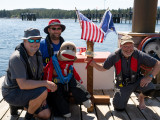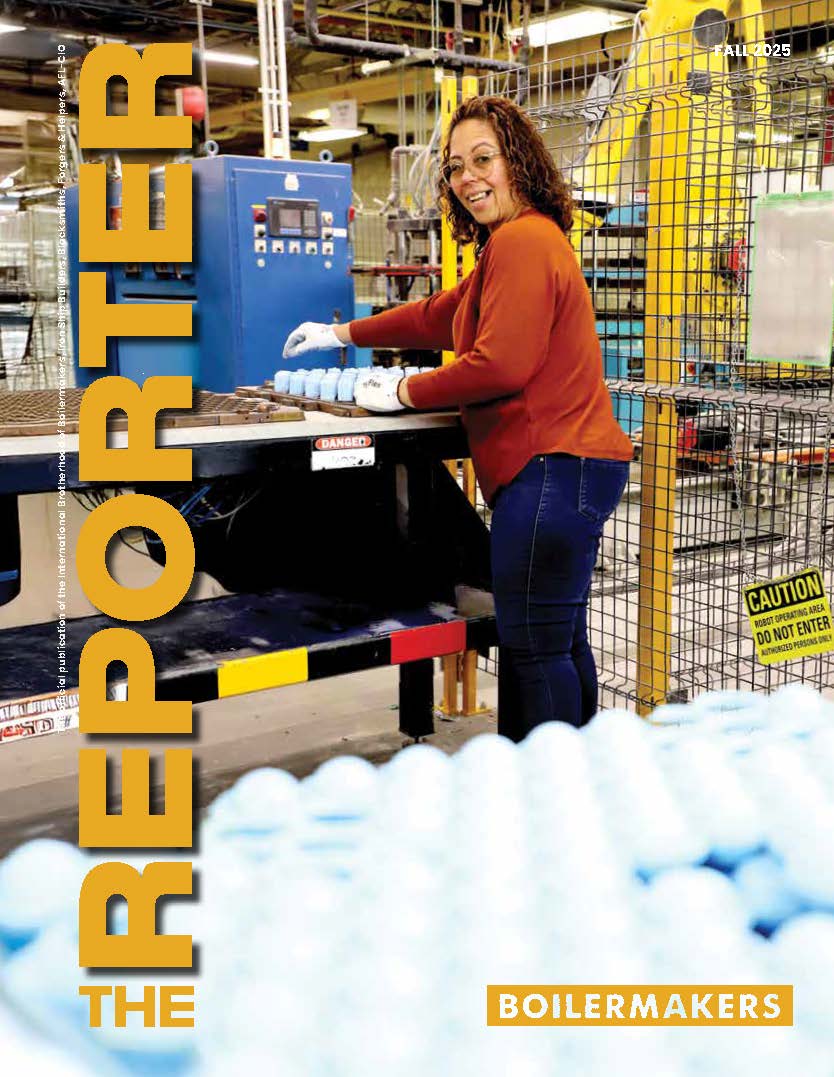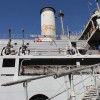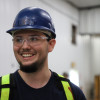The Race to Alaska’s (R2AK) website doesn’t sugarcoat the difficulties of competing in the 750-mile race through the cold waters of Port Townsend, Washington, to Ketchikan, Alaska.
It warns: “This isn’t for everyone. It’s like the Iditarod, on a boat, with a chance of drowning, being run down by a freighter, or eaten by a grizzly bear. There are squalls, killer whales, tidal currents that run upwards of 20-miles an hour, and some of the most beautiful scenery on earth.”
That only served to further pique Robert Hodge’s interest in participating in North America’s longest human and wind powered boat race.
Before recently becoming a Local 104 (Seattle) field representative, an assistant to the local’s business manager aiding in union business, Hodge worked at Lake Union Dry Dock. He spent more time daily on the water than he did on land. He’s also an avid sailor, and he was looking for a challenge. The R2AK looked like a perfect fit. He just needed to find a savvy crew to help him complete the grueling trek.
He posted to several groups on Facebook, advertising his search for the right teammates. And when he found them, the team became known as Monkey Fist. They were an unlikely three-man crew.
“I met the team on Facebook,” Hodge says. “I said, hey, anyone want to do this? One of the guys, Ryan, is a rocket scientist, and Dave is an IT worker.”
The team submitted a required adventure resume, and once they were accepted into the race, the preparations on their boat began.
But Monkey Fist had a rough start. Their first boat, Lady Jane, burned down the day after Christmas. The team was uncertain if they could overcome the loss before race day in June. Thanks to good support from the sailing community and a sponsorship from Fisheries Supply, their second boat, a 30-foot lightweight sailboat named Wildfire was outfitted and made ready in time for the race.
“We had a different boat that was a proven design that had competed in the race before,” Hodge says. “I built the pedal drive system and most of the structural repair fell on me. And I know how to fabricate, which translated from being a Boilermaker. One of my fellow Boilermakers showed up and did the welding with his mobile rig. Dave did most of the wiring.”
Before setting sail, the crew packed their boat with the necessary supplies for survival and added one more crewmate, George—a four-foot tall, pajama-wearing sock monkey, with his own Instagram to document his voyage.
As advertised, the journey was anything but easy. Hodge describes hitting several snags, from tearing his bicep in the first 20 minutes of the race, to managing intense winds, hitting a giant stump, enduring sleep deprivation and navigating dark waters.
“It was so dark you could barely see your hand in front of you,” he says. “We knew we were at least 15 to 20 feet from an island. We ended up finding a decrepit fishing shack to tie up to. At that point I had been awake at least 18 to 20 hours.”
Team Monkey Fist accomplished both Stage One and Stage Two of the race in a total of 12 days, finishing ninth place overall. Forty teams made it through Stage One and only 18 teams made it through Stage Two. Once in Ketchikan, the team stopped at a clubhouse to relax and shower. It was there that Hodge had a coincidental meeting with a retired Boilermaker.
“We get there, and I call the number to get access to [the clubhouse],” he says. The guy that answers starts talking about working at power plants. He was a retired Local 83 (Kansas City, Missouri) member. He gave me a leather Boilermaker coaster. It was cool having that connection.”
He says Team Monkey Fist will take a few months to debrief but there are already talks of a return to the 2025 R2AK.







